Samsung Galaxy S26 Plus vs Galaxy S26 Ultra: Main differences to expect

The end of 2025 is near, and with it, the arrival of the Galaxy S26 series is right around the corner.
Samsung is seemingly aiming for a late February release, a bit later than we initially expected, but this delay has a pretty good reason behind it: Samsung initially aimed to release a Galaxy S26 Pro and Galaxy S26 Edge, but due to one reason or another, the idea was reportedly scrapped, so the wheels of the giant had to turn once again and come up with its regular phone lineup.
As a result, we will be getting the usual suspects: the Galaxy S26, the Galaxy S26 Plus, and the Galaxy S26 Ultra.
Of these, the Galaxy S26 Plus and the Galaxy S26 Ultra will be the larger phones around, as usual. How will these two compare?
Galaxy S26 Plus vs Galaxy S26 Ultra expected differences:
| Galaxy S26 Plus | Galaxy S26 Ultra |
|---|---|
| Design | Design |
| Same design as before, aluminum frame | Not much different than the Galaxy S25 Ultra |
| Very compact (158.4 x 75.7 x 7.35 mm) | Taller, wider, and thicker |
| Well below 8mm in thickness | Might be below 8mm in thickness |
| Display | Display |
| 6.7-inch Dynamic AMOLED 2X screen | 6.9-inch Dynamic AMOLED 2X display |
| Potentially lower peka brightness | Could score 3,000+ nits of peak brightness |
| Probably won't get anti-reflective screen coating | Anti-reflective + privacy screen features |
| Performance | Performance |
| Qualcomm 8 Elite Gen 5 for Galaxy 93nm)/Exynos 2600 (2nm) | Qualcomm 8 Elite Gen 5 for Galaxy |
| 12GB RAM 256GB/512GB versions | 12GB RAM 256GB - 1TB storage options |
| Camera | Camera |
| Same triple camera (50MP + 10MP 3X + 12MP ultra) | Quad camera setup (200MP + 10MP 3X 50MP 5X + 50MP ultra) |
| Battery | Battery |
| ~4,900 mAh battery inside | 5,200 mAh battery possible |
| 45W wired charging | Probably scoring 60W wired charging |
| Qi2 support with magnets possible | Qi2 support with magnets possible |
Table of Contents:
Read more:
- Link 1
- Link 2
- Link 3
Design and Size
Twas ever thus
Samsung will play things extremely safe for yet another year in a row. Neither the Galaxy S26 Plus nor the Galaxy S26 Ultra will sport radically different designs. In fact, it seems the changes—if any at all—will be pretty minimal and will have little to no affect over the user experience.
With the Galaxy S26 Plus, we largely expect a continuation of the design language that most Galaxy S Plus phones over the years have utilized. A fairly compact and thin standard slab phone, with the right amount of buttons in the right places. The phone will most certainly retain the Armor Aluminum flat frame, with flat Gorilla Glass Victus 2 panels in the front and in the back.
The only major difference with the older generation could be the addition of a slightly protruding camera island that will house all three––also protruding––camera lenses at the back. The Galaxy S25 Plus did not have such a unified camera island.
The Galaxy S26 Ultra will likely swap titanium for aluminum, which is exactly what Apple did with the iPhone 17 range. Other than that and featuring a slightly raised camera island in the rear, the Galaxy S26 Ultra will look the same as the Galaxy S25 Ultra.
In terms of size, the Galaxy S26 Plus will naturally be the more compact of the two. The Galaxy S26 Ultra will be towering over it in terms of length, width, and thickness. Most certainly in weight, too, so if you want to go compact but still have a large screen, the Plus would offer a nice compromise.
| Galaxy S26 Plus | Galaxy S26 Ultra |
|---|---|
| Thickness 7.3 mm | Thickness 7.9 mm |
| Dimensions 158.4 x 75.8 mm | Dimensions 163.6 x 78.1 mm |
| Weight Around 190 grams | Weight ~220 grams |
The Galaxy S26 Ultra will retain the built-in S Pen.
No word on colors just yet, but we expect a decent selection as well as some exclusive colors available through Samsung.com.
Display Differences
The Galaxy S26 Plus will arrive with the same 6.7-inch Dynamic AMOLED 2X screen as its predecessor, with up to 120 Hz refresh rate functionality, HDR support, and peak brightness of more than 2,600 nits.
The same applies to the Galaxy S26 Ultra, which will carry a 6.9-inch Dynamic AMOLED 2X display with a 120 Hz refresh rate, HDR, and brightness that likely comes very close to 3,000 nits.
One thing that the Galaxy S26 Ultra screen will have going on for it will be the anti-reflective coating that passively boosts outdoor legibility by eliminating reflections and glare. We do hope this feature trickles down to the Galaxy S26 Plus.
| Galaxy S26 Plus | Galaxy S26 Ultra |
|---|---|
| Size 6.7" | Size 6.9" |
| Brightness 2600+ nits (peak) | Brightness 3000+ nits (peak) |
Both phones will feature under-display fingerprint scanners, which should be as fast and as accurate as they come.
Performance and Software
Hello, market segregation, old friend
Samsung is once again about to indulge in some market segregation when it comes to what chips power its Galaxy S26 and Galaxy S26 Ultra lineup… and this time it might be for good.
In the USA, Canada, and China, the Galaxy S26 Plus will rely on the Qualcomm Snapdragon 8 Elite Gen 5, the best high-profile 3nm chipset available to most Android makers out there.
In all other markets around the globe, the Samsung flagship will rely on the company's in-house Exynos 2600 chipset, which is built on a 2nm manufacturing process. Samsung reveals some modest performance gains: the 2nm Exynos 2600 is some 5% better-performing and 8% more efficient than its previous 3nm chip, the Exynos 2500.
None of this will apply to the Galaxy S26 Ultra, though. The top flagships will rely on Qualcomm power all around the world (or at least that's what the rumor mill believes).
| Galaxy S26 Plus | Galaxy S26 Ultra |
|---|---|
| Chip Qualcomm Snapdragon 8 Elite Gen 5 (US, Canada, China) Exynos 2600 (ROW) | Chip Qualcomm Snapdragon 8 Elite Gen 5 |
| Process 3nm/2nm | Process 3nm |
| RAM, Storage 12/256GB 12/512GB LPDDR5X RAM UFS 4.0 storage | RAM, Storage 12/256GB 12/512GB 12/1TB LPDDR5X RAM UFS 4.0 storage |
At the moment, it's unclear if Samsung will give us 16GB of RAM in its flagships like most Chinese top flagships, or will continue its reliance on the good ol' 12GB of memory. The latter is more likely, that's for certain.
Both devices will arrive with Android 16 and seven years of software support.
Camera
What's changing?
No major changes for the cameras this year as well.
The Galaxy S26 Plus will score a 50MP main camera, likely with an upgraded sensor, a 12MP ultrawide, and a 10MP telephoto with 3X optical zoom.
The Galaxy S26 Ultra will retain its latest setup: a 200MP main camera, a 50MP 5X periscope, a 50MP ultrawide, and a 10MP 3X telephoto. The change here could be either a larger sensor for the main camera (a 1/1.1-inch Sony sensor has been thrown around as a possibility), or a faster f/1.4 aperture for the main camera.
Both devices will retain their usual 12MP selfie cameras. Not great, not terrible.
| Galaxy S26 Plus | Galaxy S26 Ultra |
|---|---|
| Main 50 MP, f/1.8 24 mm | Main 200 MP, f/1.7 24 mm |
| Ultrawide 12 MP, f/2.2 | Ultrawide 50 MP, f/1.9 |
| Telephoto 10 MP, f/2.4 3X zoom (67mm) | Telephoto 10 MP, f/2.4 3X zoom (67mm) |
| - | Periscope 50MP, f3.4 5X zoom (111mm) |
Battery Life and Charging
Finally, an upgrade!
The big news lately is that Samsung might finally step away from the 5,000 mAh battery it has been using for the past five or six years on its Galaxy Ultra phones. The rumor mill suggests we might actually get a 5,200 mAh battery inside the Galaxy S26 Ultra, which is a small increase, but an increase nonetheless!
That would likely improve the battery endurance of the Ultra way above what we saw on the Galaxy S25 Ultra, which was already decent on the Galaxy S25 Ultra.
The Galaxy S26 Plus, on the other hand, will likely arrive with a battery in the ballpark of 4,900 mAh, just like the Galaxy S25 Plus. Could we hope for a 5,000 mAh battery here? Remains to be seen.
| Galaxy S26 Plus | Galaxy S26 Ultra |
|---|---|
| Battery size 4,900 mAh | Battery size 5,200 mAh |
Charging speeds 45W wired 15W wireless charging USB-C 3.0 | Charging speeds 60W wired 15W wireless charging USB-C 2.0 |
The Galaxy S26 Ultra is also likely getting a charging upgrade from 45 to 60 W. This would allow the device to charge faster than before. On that note, the Galaxy S26 Plus will likely keep its 45 W charging. Pretty average these days.
There's a high chance we'd see full Qi2 implementation on the Galaxy S26 range. This means wireless charging speeds potentially up to 25W, but the bigger thing here could be the use of Qi2 magnets in the rear. These could allow you to easily snap on compatible Qi2, MagSafe, or Pixelsnap accessories.
Specs Comparison
|
|
|
| Samsung Galaxy S26+ | Samsung Galaxy S26 Ultra |
Design
| Dimensions | |
|---|---|
| 3.07 x 6.43 x 0.31 inches 77.9 x 163.4 x 7.9mm |
|
| Materials | |
| Back: Glass (Corning Gorilla Glass Victus 2) Frame: Aluminum |
Back: Glass (Corning Gorilla Glass Armor 2) Frame: Titanium |
| Resistance | |
| Water, Dust; IP68 | Water, Dust; IP68 |
| Biometrics | |
| Ultrasonic in-screen fingerprint | Ultrasonic in-screen fingerprint |
| Features | |
| Stylus | |
| Keys | |
| Right: Volume control, Lock/Unlock key | Right: Volume control, Lock/Unlock key |
| Colors | |
| Icy Blue, Mint, Navy, Silver Shadow | |
Display
| Size | |
|---|---|
| 6.7-inch, 92.47% screen-to-body | 6.9-inch, 90.30% screen-to-body |
| Type | |
| Dynamic AMOLED, 120Hz, HDR, 2600 nits | Dynamic AMOLED, 120Hz, HDR, 2600 nits |
| Resolution | |
| 3120x1440px, 19.5:9 ratio, 513 PPI | 3120x1440px, 19.5:9 ratio, 498 PPI |
| Protection | |
| Corning Gorilla Glass Victus 2 | Corning Gorilla Glass Armor 2 |
Hardware
| System chip | |
|---|---|
| Snapdragon (3 nm) | Snapdragon (3 nm) |
| Processor | |
| Octa-core | Octa-core |
| GPU | |
| Yes | Yes |
| Memory | |
| 12GB (LPDDR5X)/256GB (UFS 4.0) 12GB/512GB | 12GB (LPDDR5X)/256GB (UFS 4.0) 12GB/512GB 12GB/1024GB |
| Storage expansion | |
| not expandable | not expandable |
| OS | |
| Android (16), up to 7 OS updates | Android (16), up to 7 OS updates |
Battery
| Type | |
|---|---|
| 4900 mAh, Li - Ion | 5000 mAh, Li - Ion |
| Charging | |
| Fast charging Qi wireless charging, Reverse wireless charging | Fast charging Qi wireless charging, Reverse wireless charging |
| Charge speed | |
| Wired: 45.0W Wireless: 15.0W | Wired: 45.0W Wireless: 15.0W |
Camera
| Rear | |
|---|---|
| Triple camera | Quad camera |
| Main camera | |
| 50 MP (OIS, PDAF) Sensor name: Samsung GN3 Aperture size: F1.8 Focal length: 24 mm Sensor size: 1/1.56" Pixel size: 1.0 μm |
200 MP (OIS, Laser and PDAF) Sensor name: Samsung ISOCELL HP2 Aperture size: F1.7 Focal length: 24 mm Sensor size: 1/1.3" Pixel size: 0.6 μm |
| Second camera | |
| 12 MP (Ultra-wide) Sensor name: Sony IMX564 Aperture size: F2.2 Focal Length: 13 mm Sensor size: 1/2.55" Pixel size: 1.4 μm |
50 MP (Ultra-wide, PDAF) Sensor name: Samsung JN3 Aperture size: F1.9 Pixel size: 0.7 μm |
| Third camera | |
| 10 MP (Telephoto) Sensor name: Samsung S5K3K1 Optical zoom: 3.0x Aperture size: F2.4 Focal Length: 67 mm Sensor size: 1/3.94" Pixel size: 1.0 μm |
10 MP (Telephoto, OIS, PDAF) Sensor name: Sony IMX754 Optical zoom: 3.0x Aperture size: F2.4 Focal Length: 67 mm Sensor size: 1/3.52" Pixel size: 1.12 μm |
| Fourth camera | |
| 50 MP (Telephoto, Periscope, OIS, PDAF) Sensor name: Sony IMX854 Optical zoom: 5.0x Aperture size: F3.4 Focal Length: 111 mm Sensor size: 1/2.52" Pixel size: 0.7 μm |
|
| Flash | |
| LED | LED |
| Video recording | |
| 8K UHD (30 fps), 4K UHD (120 fps), 1080p (240 fps) | 8K UHD (30 fps), 4K UHD (120 fps), 1080p (240 fps) HDR, Continuous autofocus, Picture-taking during video recording |
| Front | |
| 12 MP Video capture: 4K UHD (60 fps) | 12 MP (PDAF, HDR) Video capture: 4K UHD (60 fps) |
Connectivity & Features
| Bluetooth | |
|---|---|
| 5.4 | 5.4 |
| WLAN | |
| a,b,g,n,ac,Wi-Fi 6,Wi-Fi 6E,Wi-Fi 7 Wi-Fi Direct, Hotspot 802.11 a, b, g, n, ac, ax | a,b,g,n,ac,Wi-Fi 6,Wi-Fi 6E,Wi-Fi 7 Wi-Fi Direct, Hotspot 802.11 a, b, g, n, ac, ax |
| USB | |
| Type-C, USB 3.2 | Type-C, USB 3.2 |
| Sensors | |
| Accelerometer, Gyroscope, Compass, Barometer, Ambient light sensor, Proximity sensor | Accelerometer, Gyroscope, Compass, Barometer, Ambient light sensor, Proximity sensor |
| Hearing aid compatible | |
| M3/T4 | M3/T4 |
| Location | |
| GPS, A-GPS, Glonass, Galileo, BeiDou, Cell ID, Wi-Fi positioning | GPS, A-GPS, Glonass, Galileo, BeiDou, Cell ID, Wi-Fi positioning |
| Other | |
| NFC, Ultra Wideband (UWB) | NFC, Ultra Wideband (UWB) |
Multimedia
| Headphones | |
|---|---|
| No 3.5mm jack | No 3.5mm jack |
| Speakers | |
| Earpiece, Multiple speakers | Earpiece, Multiple speakers |
| Features | |
| aptX, aptX-HD | |
Cellular
| 5G Bands | |
|---|---|
| n1, n2, n5, n7, n25, n28, n41, n66, n71, n77, n78, n258, n260, n261, SA, NSA, Sub-6, mmWave, 5G Ready | n1, n2, n5, n7, n25, n28, n41, n66, n71, n77, n78, n257, n258, n260, n261, SA, NSA, Sub-6, mmWave |
| LTE Bands | |
| 1, 2, 3, 4, 5, 7, 8, 12, 13, 14, 18, 19, 20, 25, 26, 28, 29, 30, 66, 71 | 1, 2, 3, 4, 5, 7, 8, 12, 13, 14, 18, 19, 20, 25, 26, 28, 29, 30, 66, 71 |
| TDD Bands | |
| 38, 39, 40, 41, 48 | 38, 39, 40, 41, 48 |
| 3G Bands | |
| 1, 2, 4, 5, 8 | 1, 2, 4, 5, 8 |
| Data Speed | |
| LTE-A, HSDPA+ (4G) 42.2 Mbit/s | LTE-A Pro Cat 20 (2000/150 Mbit/s), HSDPA+ (4G) 42.2 Mbit/s |
| SIM type | |
| Nano SIM, eSIM | Nano SIM, eSIM |
See the full
Samsung Galaxy S26+ vs Samsung Galaxy S26 Ultra specs comparison
or compare them to other phones using our
Phone Comparison tool
Summary
Samsung will once again play it extremely safe with its flagships. No new product names and categories, no major changes, no major shakeups in the performance or design areas.
What we will get is a very familiar pair of devices that will retain their major selling points and key differentiators.
The Galaxy S26 Ultra will be the phone that maximalists and power users will inevitably pick, as it will most certainly end up being the most powerful Android phone available in the US for the foreseeable future. With the best camera and most features and functionalities on board, it will be the expensive but no-compromise phone to get in early 2026.
At the same time, the Galaxy S26 Plus will probably continue being that weirdly positioned device that feels a bit off. It's a flagship, but not quite, and it's compact, but not as much as the Galaxy S26. It's been nearly half a decade of Galaxy S Plus phones, and I still feel that it doesn't have a valid reason for existence.
Follow us on Google News

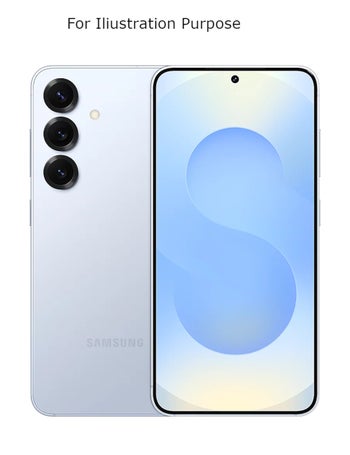
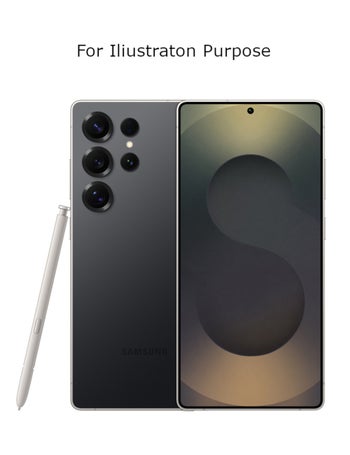


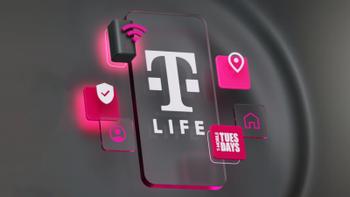

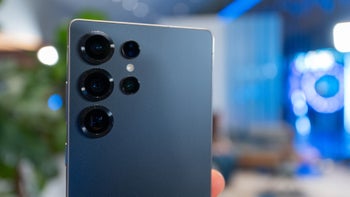

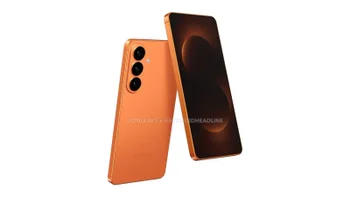

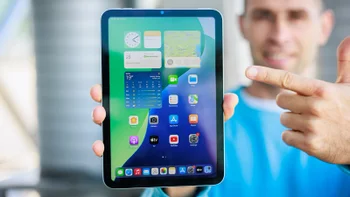

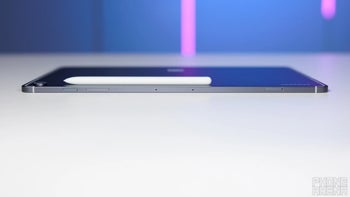
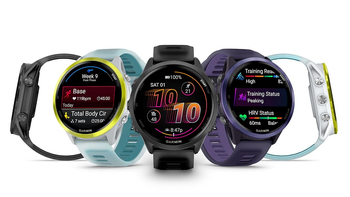
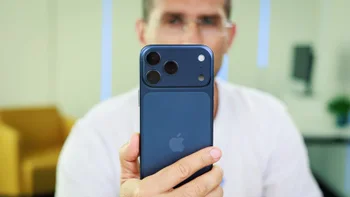
Things that are NOT allowed:
To help keep our community safe and free from spam, we apply temporary limits to newly created accounts: